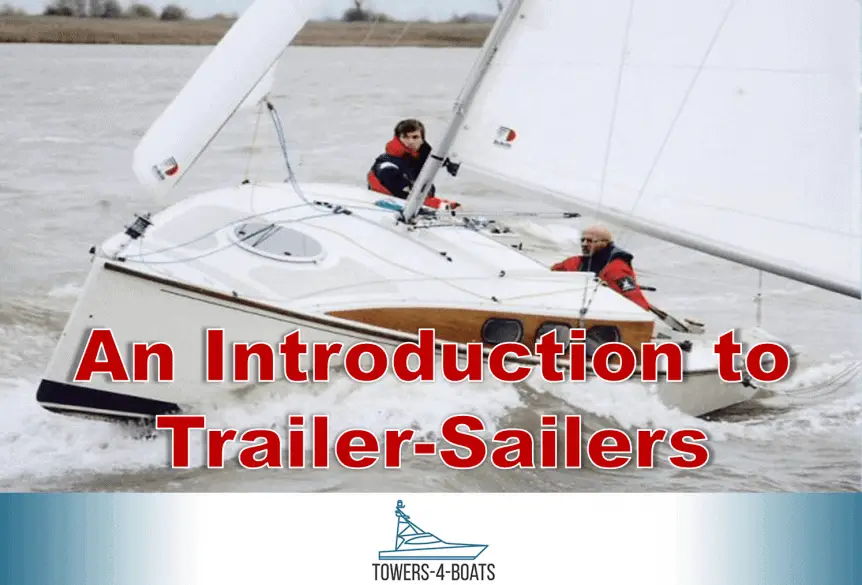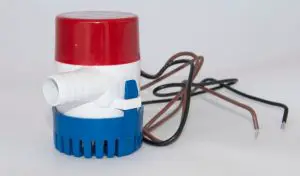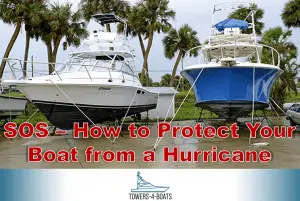An Introduction to Trailer-Sailers
Not everyone can afford a slip at the local marina, and not everyone wants to. Everyone knows that there are plenty of trailerable motorboats, but did you realize that there are trailerable sailboats out there too?
Many new boaters balk at sailboats, thinking that sailing is a difficult skill to learn and reserved for only the saltiest of souls. But sailing is fundamentally simple, and it’s a great way to connect with the water and to get away from it all.
If your goal is to spend peaceful days on the water and maybe even spend some time gunkholing and exploring in the backwaters, pocket cruising sailboats make the perfect vessel. No, you won’t get there fast, but isn’t the adventure about in the journey more than just the destination? Keep reading to learn about trailer-sailers.
How Are Trailer-Sailers Different?
One of the best things about sailboats is that their hull designs are not limited by the same constraints that planning hull powerboats are. An 18 to 20-foot sailboat will come with a small cabin, a basic berth, toilet, and probably even a simple galley. Compared to a similar-sized powerboat, there is more space to move around and to be comfortable for long trips.
Of course, it’s not as simple as that sounds. Sailboats have masts and keels, both of which present challenges when towing them on land.
Masts on small sailboats are deck-stepped, meaning that they sit on the upper deck and are held up by their stays and shrouds. The smaller the boat, the easier it is to put up and take down the mast at the boat ramp. With practice, you can usually complete the task in less than 30 minutes.
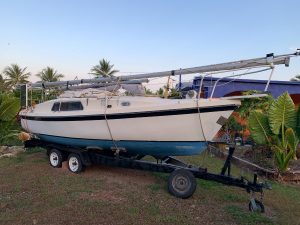 Sailboats need an underwater keel to help them sail into the wind. On small boats, this is nearly always in the form of a centerboard that can be raised or lowered as necessary. The added benefit of a centerboard boat is that it can be easily put on a trailer since the boat is flat-bottomed when the board is raised. It also means that while boating, you won’t be limited to deeper waters like larger keelboats.
Sailboats need an underwater keel to help them sail into the wind. On small boats, this is nearly always in the form of a centerboard that can be raised or lowered as necessary. The added benefit of a centerboard boat is that it can be easily put on a trailer since the boat is flat-bottomed when the board is raised. It also means that while boating, you won’t be limited to deeper waters like larger keelboats.
Larger sailboats often have thousands of pounds of lead ballast built into their keels. This makes them more stable and counteracts the pressure of the wind pushing on the sails. But small boats need to be light-weight when being towed by a car, so manufacturers often use water ballast instead. Water-ballasted boats have tanks that fill with seawater to increase the weight of the vessel and improve stability. The water drains out at the boat ramp when you put the boat on the trailer.
Since sailboats are displacement hulled vessels, their speed is a factor of their waterline length and beam. Once they are pushed to hull speed, only a phenomenal amount of power will get them to go any faster. Small outboards, usually less than ten horsepower, propel these pocket cruisers at hull speed quickly. This reduces the cost involved in operating a boat exponentially since these miserly portable outboards are cheaper to buy than their big brothers, and they sip fuel.
Read our article comparing trailering your boat versus renting a slip.
Top Tips for Picking a Trailer-Sailer
The World is Your Oyster
No, Oyster Yachts doesn’t make a trailer-sailer. But with a boat that you can tow with your car, you can really explore some far horizons. You should always buy a boat that you will use often, so it should work for the waters near your home. But it doesn’t hurt to dream of a once-a-year trip to the Chesapeake Bay or the Florida Keys where you can sleep at anchor under the stars and spend your days exploring new towns.
Don’t Limit Yourself to the Big Name Brands
Several brands of boats have built their entire business around making trailer sailers. West Wright Potter and MacGregor come to mind. Of course, Catalina, Hunter, and Beneteau all make small trailerable boats too. But there are simply hundreds of sailboats out there, many of them loved by their owners for decades. Fiberglass boats are generally easy to work on and easy to find parts for, so don’t be put off by buying an older hull that is no longer produced.
Shop for the Easiest to Use Boat
Some designs of boats are easier to set up than others. For example, some types of sailboats have fewer sails, fewer lines, and unstayed masts. Catboats are one example. Instead of a sloop, which has the mast in the middle and two sails, catboats are a traditional style of boat that has a free-standing mast forward and one large mainsail. Two beautiful examples of a trailerable catboats are the Sanderling by Marshall Marine and the boats built by Com-Pac Yachts of Florida.
It Doesn’t Have to be Tiny
Several trailer-sailers have a big-boat feel. The MacGregor 26 is an example of a boat that feels enormous on the inside, yet fits nicely on a boat trailer. It uses water ballast to keep the towing weight down. It’s not the best sailboat in the world, but it’s unique hybrid design allows it to plane when fitted with a 40 to 50 horsepower outboard. It’s not the best powerboat in the world either, but it’s the only one we know of with sails!
Take a Class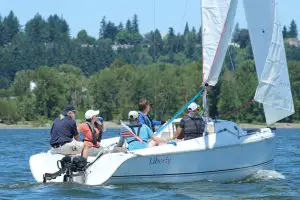
Sailing is a fun a relaxing pastime, and there’s no reason to be intimidated by the jargon or technicalities. Many sailors are self-taught, but if you’re new to boating, a sailing course is a great introduction. The American Sailing Association (ASA) has schools across the country and offers a two-day Introduction to Sailing course. You could also hire a captain to take you out on your boat to show you the ropes. Either way, professional training will help you enjoy your craft more and be more confident on the water. It may also help reduce some of your insurance premiums.
Conclusion
Everyone enjoys different things about being on the water. If you need to get to your destination quickly, sailboats probably aren’t the best choice for you. But if your whole goal of being on the water is to enjoy your time being on the water, sailing is a blissfully fundamental solution. You don’t need wind to go sailing, and you can still motor where ever you like. And when the wind is right to give you a free ride, you can enjoy the same tranquility and peace that sailors have found for thousands of years.

